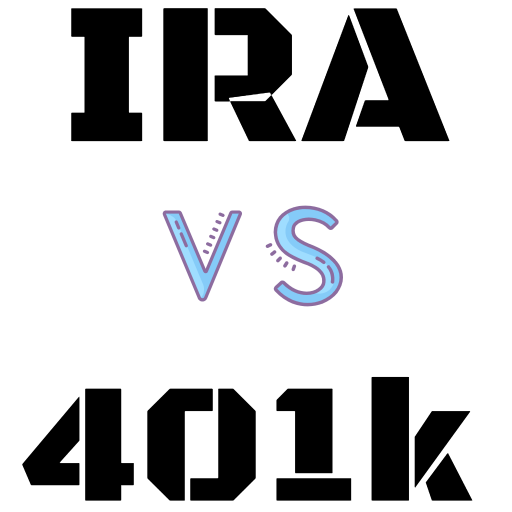
By Danielle Harrison, CFP
For those with young children, the cost of childcare can feel astronomical. With two boys in daycare, my family spends well over twice as much for childcare each month than we do on our mortgage, an all too often phenomenon in the United States. Fortunately, the federal government recognized that the high cost of childcare can be burdensome for families and created several ways to offset a portion of childcare expenses including Dependent Care Flexible Spending Accounts (DCFSA) and the Dependent Care Tax Credit.
In response to the effects of the pandemic, the American Rescue Plan Act of 2021 made several changes to the Dependent Care FSA and Dependent Care Tax Credit for 2021. The changes are so substantial, that what may have been the optimal solution to lower childcare expenses at the beginning of the year, may no longer be the best option now. Reevaluating your circumstances in light of the new rules can help ensure you don’t leave any money on the table.
Dependent Care FSA
Many employers offer the ability to save for childcare expenses in a flexible spending account. The contributions are made pre-tax, so any funds contributed are not subject to federal and state income taxes or social security and Medicare withholdings. The higher one’s marginal tax bracket, the more advantageous utilizing the Dependent Care FSA can be. Eligible childcare options are broad and include daycare, preschool, day camps, before and after school programs, and several other types of dependent care.
Prior to the American Rescue Plan being enacted in March of 2021, DCFSA contributions were limited to $5,000 a year for individuals or married couples filing jointly and $2,500 for a married person filing separately. Following the American Rescue Plan, however, the federal maximum has been increased to $10,500 a year for individuals or married couples filing jointly and $5,250 for a married person filing separately, effectively doubling the possible tax benefit for 2021. The decision to increase the limit is subject to the employer, however, so you will need to verify with your HR department if they plan on participating in the increase.
Dependent Care Tax Credit
Prior to the American Rescue Plan Act of 2021, the Dependent Care Tax Credit provided a maximum of 35% of eligible childcare expenses paid during the year as a tax credit. Filers could claim up to $3,000 of expenses for one child and up to $6,000 for two or more, resulting in a maximum available credit of $1,050 and $2,100, respectively. The percentage of childcare expenses provided by the credit declined rapidly as Adjusted Gross Income (AGI) increased above $15,000, dropping by 1% for every $2,000 increase until it leveled out at 20%. For those with an AGI of $43,000 and above, the maximum credit was $600 for one child and $1,200 for two or more. These limits have historically made the Dependent Care FSA more advantageous than the Dependent Care Tax Credit for the majority of taxpayers with AGIs above $43,000.
Under the American Rescue Plan, the parameters for the Dependent Care Tax Credit changed dramatically. In 2021, the maximum credit has been increased to 50% of eligible childcare expenses and the allowable expenses were increased to $8,000 for one child and $16,000 for multiple children. The result is that rather than the previous maximum credit of $1,050 and $2,100, taxpayers could receive up to $4,000 and $8,000, respectively in 2021.
Not only is the possible credit larger, but the AGI limits were also shifted. Those with an adjusted gross income of up to $125,000 can take advantage of the full 50% credit. The percentage then reduces from 50% to 20% between $125,000 and $185,000 in AGI using the same 1% reduction per $2,000 in AGI as before. For those with an AGI anywhere between $185,000 to $400,000, the credit is 20%. The credit then reduces from 20% beginning at $400,000, once again at a rate of 1% per $2,000 in AGI, until it reaches zero percent and is eliminated at $440,000. The credits are also now refundable, so taxpayers can receive a refund for the credit even if they do not have an offsetting tax liability.
Things to consider when deciding between the Dependent Care FSA and the Dependent Care Tax Credit
The first step is to ensure you qualify for both options. Below are a few items to keep in mind:
· Both the Dependent Care FSA and the Dependent Care Tax Credit are limited to the childcare expenses incurred prior to the child turning 13, unless they meet other criteria, such as being disabled.
· Expenses paid to certain care providers are not eligible, such as payment to siblings under the age of 19.
· Certain childcare expenses (such as overnight camps or private school education for those in kindergarten and up) are not eligible.
· You must pass the Work-Related Expense Test to qualify for either option. The childcare expenses must be paid in order for you and your spouse (if filing jointly) to work or look for work.
· Unless you or your spouse are a student that meets certain criteria or are unable to take care of yourself, you must both have earned income during the year that equals or is greater than the amount of childcare expenses you claim.
· If you are married filing separately, in most instances you do not qualify for the Dependent Care Tax Credit.
It is also important to know that it is not an either/or decision. You can take advantage of both the Dependent Care FSA and Dependent Care Tax Credit, you just can’t double-dip. For example, say you were unaware of the tax code changes and realize at the end of 2021 that you would have been better off taking the Dependent Care Tax Credit, but have already contributed $5,000 into a Dependent Care FSA. If you have one child and spent over $8,000 for their care in 2021, you can still take advantage of $3,000 of expenses ($8,000 childcare expense limit minus the $5,000 of expenses you have already received benefit for through the Dependent Care FSA). For those with an AGI under $125,000 that equates to a dependent care tax credit of $1,500. If you had two or more children and expenses of $16,000 you can claim the additional $11,000 of expenses and receive $5,500 in tax credits.
Next Steps
Taking all of these variables into consideration can make for a complicated decision, utilize this 2021 Dependent Care FSA vs. Dependent Care Tax Credit Calculator for help deciding which option(s) would be best for you. As with any general calculator it does not take into consider every circumstance, so please consult a qualified tax or financial advisor for your particular situation.
For questions concerning the Dependent Care FSA please see your employer’s Human Resource department for available options on amending 2021 contributions. For those wanting to take advantage of the Dependent Care Tax Credit, Form 2441 will need to be filed with your 2021 tax return.
About the author: Danielle R. Harrison, CFP®, CFT-I™
Danielle R. Harrison, MBA, is the founder and president of Harrison Financial Planning, a fee-only financial planning firm based in Mid-Missouri and equipped to work with clients across the country. Harrison Financial Planning provides comprehensive financial planning and investment management and is there to help guide clients through any financial decisions that arise. Harrison Financial Planning specializes in working with busy professionals and retirees who enjoy giving back through their profession, volunteerism, or charitable giving.
Got Questions About Your Taxes, Personal Finances and Investments? Get Answers!
Email Jeffrey Levine, CPA/PFS, chief planning officer at Buckingham Wealth Partners, at: AskTheHammer@BuckinghamGroup.com.
ICYMI
Off Target: On the Underperformance of Target-Date Funds
What Investors Should Know About Private Equity
Breaking Up is Hard to Do – 3 Tax Tips to Help
Evolving IRA Distribution Rules Complicate Planning
When Not to Rollover Your 401(k)
Using Defined Outcome ETFs for Retirement Income
Ask the Hammer
Is it Possible to Convert an RMD into a Roth IRA
What Kinds of Expenses are Covered by an HSA?
What’s Up with the New Social Security Statement?
Ask Bob
